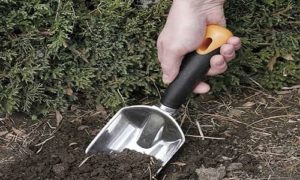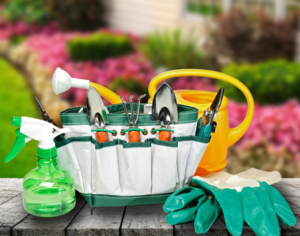Planting green grass on your lawn can significantly improve the space and curb appeal of your crib. Like other plants, grass will grow better if they have sufficient nutrients. If you think the grass is always greener on the other side, it is time to invest in some quality lawn fertilizer.
Finding the best fertilizer for grass should not be a problem, given the limitless options you have from online retailers. However, there are various aspects to review before you order fertilizer from any store. Below is a brief overview of the best fertilizers for grass, including a buying guide to help you find your lawn’s ideal choice.
Table of Contents
Overview of Our Top Choice:
Our top pick is Scotts Turf Builder Starter Food for New Grass. This is an organic fertilizer that gives your lawn a proper balance of natural nutrients.
Last update on 2024-04-17 / Affiliate links / Images from Amazon Product Advertising API
Types Of Lawn Fertilizer
Using grass fertilizer is an effortless way to prevent pests and diseases. It also provides the nutrients required for healthy growth and reduces maintenance requirements. However, with so many fertilizers for grass in the market, determining the ideal choice can be daunting. Being able to distinguish the different types of fertilizers available can be a big help.
There are four main categories, and they are as follows:
Time-release and slow-release fertilizer
Slow and time-release fertilizers release a small number of nutrients at a time, lasting several months before you need to feed the grass. These fertilizers are ideal if you have little time as you won’t need to feed the grass for a long time.
Generally, time-release fertilizer can be fed 6-8 weeks, depending on your watering schedule, which is significantly longer than the four weeks recommended for other fertilizers.
Granular fertilizer
These fertilizers allow the grass to harvest nutrients gradually, minimizing the chances of burning your lawn. Granular fertilizer is easy to apply and takes a long time to leach away into the soil, so your grass will be able to absorb most of the nutrients.
They come in dry pellet form that can be measured; you can easily calculate the required amount. Granular fertilizers can be natural or synthetic. They tend to be slow-release fertilizers, although you can still find time-release granular fertilizer.
Liquid and water-soluble fertilizers
Liquid fertilizer offers the most effective way to deliver nutrients to the grass roots quickly. They are applied using a hose and are fast-releasing. Most commercially available liquid fertilizers are made using inorganic compounds, so it is essential to use them sparingly. You should also check the right depth to avoid losing ammonia.
Organic and synthetic fertilizer
As the name suggests, organic fertilizers are made using living organisms or their byproducts. Synthetic formulas, on the other hand, are immediate-release chemicals used to quick greening. Organic fertilizers are recommendable, but synthetic options are just as great, so the choice is yours on what to apply on your lawn.
How To Find The Best Grass Fertilizer For Your Lawn
Although there are various types of grass fertilizer and their retailers, not all options you encounter are desirable. It is essential to choose fertilizers according to the grass and lawn you have. Nonetheless, there are various fundamental aspects to review before purchasing grass fertilizer. These include:
The NPK ratio
Understanding the numbers is the first step to choosing quality fertilizers that will nourish your lawn grass. The NPK ratio represents the percentages of essential nutrients nitrogen (N), phosphorus (P), and potassium (K). The right amount of nitrogen will help keep your grass green all year round while phosphorus is recommendable for root growth, although it can potentially contaminate water.
Potassium, on the other hand, protects your grass from drought and diseases. A standard grass fertilizer may have an NPK ratio printed as 12-0-10, which implies the formula has 12% nitrogen, no phosphorus, and 10% potassium. It is vital to choose NPK ratios based on the turf you have and climate in your area.
You can research your grass species to find the optimal ratio for these nutrients based on their unique needs. The recommended NPK ratio for grass is 4-1-2 or 3-1-2, but the choice will depend on your grass and turf. Essentially, grass requires more nitrogen and potassium than phosphorus.
Select the type
Once you know the NPK ratio your grass needs, you should proceed to choose between organic and synthetic fertilizer. Synthetic grass fertilizers often feature minerals, gasses, and waste, which is added to speed the release time. You can see the impact of synthetic fertilizer within a matter of days.
However, they carry a downside of burning your lawn (killing the grass), so you should use them cautiously. Synthetic fertilizers can also pose a threat to the environment if they leak to water supply systems. Organic fertilizer presents a safer option if you are concerned about burning the lawn.
They are made from living organisms, such as cottonseed, peat moss, bone meal, blood, guano, and more. Organic fertilizer takes longer to produce visible benefits to the grass, so you should be patient and wait a few weeks before feeding your grass more fertilizer. They also have significantly lower environmental risks.
Find your formula
Once you have decided on a type of fertilizer to feed your grass, it is time to make one more distinction. Fertilizers come in two main forms, granular and liquid or liquid-soluble powder. Granular fertilizers are slow-release options that take longer to work the magic while liquid fertilizer may are immediately released to the roots causing quick nourishment.
Liquid formulas, however, can contaminate the local water supply when used in large amounts. You should review all the compounds in the formula and watch out for leaking lead, arsenic, and cadmium to prevent long-term public health risk and algae bloom commonly found in lawns fed liquid industrial fertilizers.
Nonetheless, you can find organic liquid fertilizer, or make one devoid of high-risk contaminants. Most homeowners and landscapers use a combination of granular and liquid fertilizer during different periods of the year. Generally, liquid fertilizer is ideal when you seek rapid results, while granular are suitable for long-term nourishment. They require less-frequent follow-up and also pose a reduced risk on the environment and your lawn.
Top 5 Best Grass Fertilizer Reviewed
1. Scotts Turf Builder Starter Food
This is one of the highly reputed organic fertilizers you will encounter in the market. The fertilizer is plant-based and provides a gentle, reliable nutrient-release system that is ideal for all grass and lawn types. It features no bio-solids; you will not have the unpleasant odor present in most organic fertilizers.
Scotts starter food comes in a 15 lb bag that can feed up to 5,000 square feet with a 24-25-4 NPK ratio. The high nitrogen and potassium ensure a lush, green lawn without the negative impacts of phosphorus. It also promotes faster root and blade development.
Pros:
- Natural organic fertilizer
- Doesn’t stimulate weed growth
- Provides lush, green grass
- Easy to apply
Cons:
- Takes longer to see the results
Last update on 2024-04-17 / Affiliate links / Images from Amazon Product Advertising API
2. Milorganite Organic Nitrogen Fertilizer
This is one of the best if you are looking for granular organic fertilizers rich in nitrogen and phosphorus. Milorganite Organic Nitrogen Fertilizer has a reputation for maintaining green lawns throughout the year and is high in both nitrogen and iron. It became popular in the 1920s and remains one of the trusted fertilizer brands in the market today.
Milorganite does not require water application and lasts up to 10 weeks. It is also one of the favorite no-fuss, no-muss fertilizer among users and boasts the best ratings online. Its 5-4-0 NPK ratio also has a longstanding reputation of earth-friendly and effective grass nourishment, so it won’t burn your lawns.
Pros:
- Safe for your grass and lawn
- Slow-release fertilizer that lasts up to 10 weeks
- Very easy to apply
- Impeccable reputation from users
Cons:
- Has no potassium
Last update on 2024-04-17 / Affiliate links / Images from Amazon Product Advertising API
3. Scotts Liquid Turf Builder Lawn Food
This is an all-season grass fertilizer ideal for those that don’t want to wait for long to have green lawns. It is affordable, easy to apply, and fast-acting, with the ability to green-up most grass types. It is also safe and will not burn your lawn. The Scotts Liquid Turf Builder Lawn Food has a decent reputation and boasts an NPK ratio of 29-0-3.
It can cover up to 2,000 square feet per bottle, providing sufficient nitrogen to keep your lawns green. You can use the fertilizer to get rid of any patchy, brown lawn sections, and the effects will last up to two months before you need a reapplication.
Pros:
- It’s a fast-acting solution for a patchy lawn
- Cost-effective – covers more ground
- Safe and easy to apply
- High nitrogen levels ensure green grass all year round
Cons:
- Does not last long
- Won’t work on some turfs
Last update on 2024-04-17 / Affiliate links / Images from Amazon Product Advertising API
4. Miracle-Gro Lawn Food
As one of the most popular grass fertilizer brands in the market, Miracle-Gro offers a natural choice for those seeking to restore their lawn’s health. It is a water-soluble lawn fertilizer that comes with an applicator for effortless dispensing. You can cover vast grounds within a few minutes, up to 1,000 square feet in just 12 minutes.
The box can feed lawns up to 4,000 square feet. The fertilizer is fast-acting, giving you thick green lawns in a matter of days. It feeds grass instantly and promotes the growth of soft, lush carpet of healthy green grass. Miracle-Gro lawn food also features compounds that won’t burn your grass or turf.
Pros:
- Feeds grass instantly causing fast greening
- Comes with ergonomic, user-friendly dispenser
- Features nutrients for most types of grass
- Reputable among users
Cons:
- Easily lost to air and rain
- Features the inherent demerits of liquid fertilizers
Last update on 2024-04-17 / Affiliate links / Images from Amazon Product Advertising API
5. Scotts Green Max Fertilizer
This is another reliable grass fertilizer you can use to get thick green lawns. The 2-in-1 dual-action fertilizer acts fast, and you can see the effects within three days of application. Green Max also features iron, which makes the grass thicker, healthier, and greener. It can promote grass growth while weeding out other types of weed growing in your lawn.
Scotts Green Max Fertilizer is ideal for those that seek quick results and have little time dedicated to lawn care. You should apply every six to eight weeks to get the best results.
Pros:
- It’s a fast-acting solution that makes grass greener in three days
- Features iron and high concentrations of nitrogen
- Safe for all types of grass – won’t stain your lawn
- Recommended by lawn experts
Cons:
- Requires frequent application
Last update on 2024-04-17 / Affiliate links / Images from Amazon Product Advertising API
Our Verdict
Several retailers offer grass fertilizer, so you will naturally find distinctions. It is recommendable to choose credible, reputable retailers that can guarantee high-quality fertilizer from the manufacturer. More importantly, you should consider the type of grass you want to plant and your lawn’s unique requirements.
Our top pick is Scotts Turf Builder Starter Food for New Grass. This is an organic fertilizer that gives your lawn a proper balance of natural nutrients. This makes the lawn healthier and greener. One bag can cover 5,000 sq. ft, making the product effective and economical. It feeds the fungi and bacteria in your soil, producing the nutrients your lawn need.
Last update on 2024-04-17 / Affiliate links / Images from Amazon Product Advertising API









